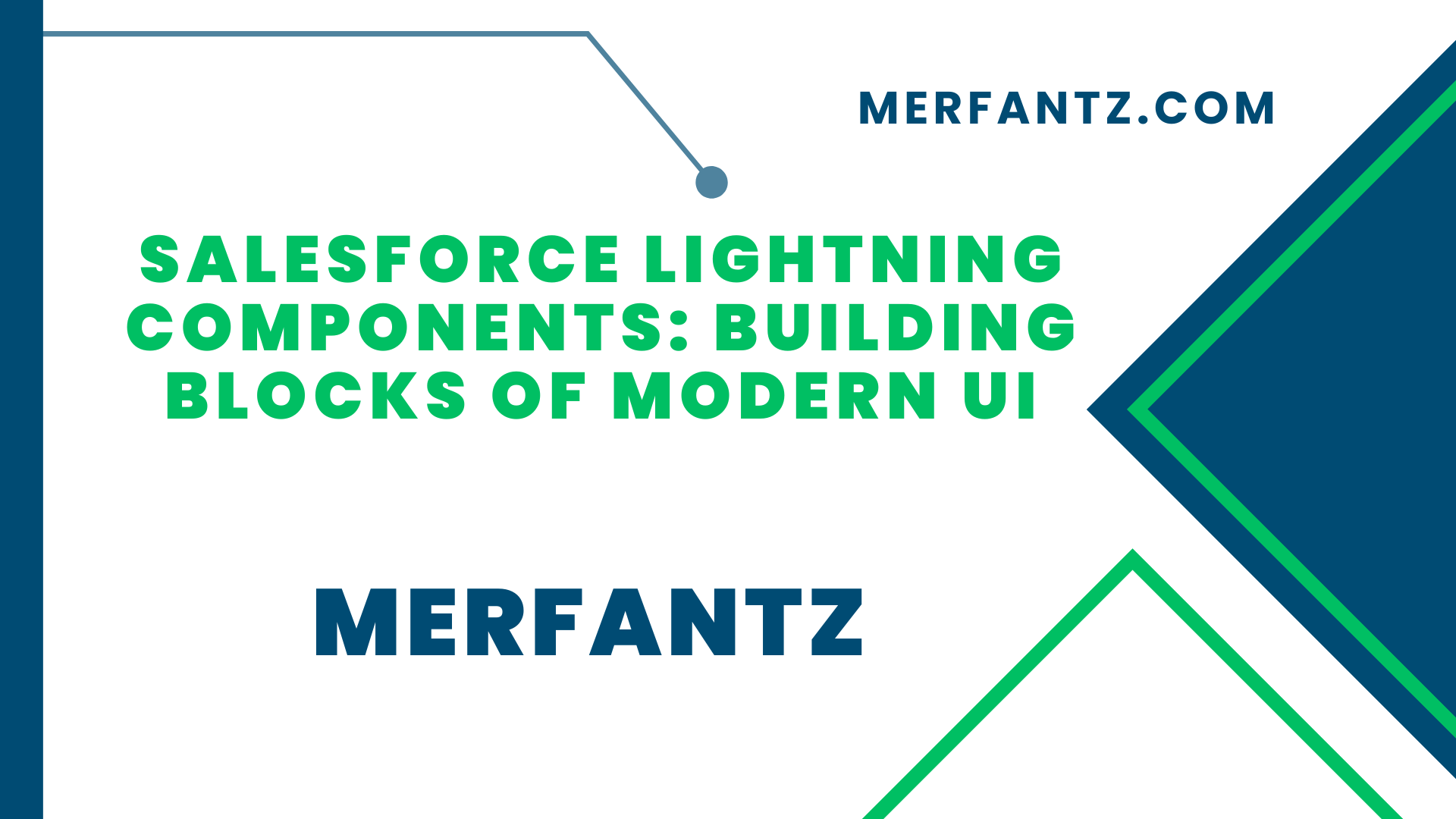Introduction to Salesforce Lightning Components
Salesforce Lightning Components have revolutionized the way user interfaces are built on the Salesforce platform. These components serve as the fundamental building blocks for creating modern and interactive UI experiences. Whether you are a developer or a business user, understanding the power and capabilities of Salesforce Lightning Components can greatly enhance your productivity and user satisfaction.
Key Features and Benefits of Salesforce Lightning Components
Salesforce Lightning Components offer a wide range of features and benefits that contribute to the overall success of your application development projects. With Lightning Components, you gain access to a rich set of pre-built components that can be easily customized and extended to fit your specific requirements. This saves you valuable time and effort, allowing you to focus on delivering a superior user experience.
One of the key benefits of Salesforce Lightning Components is their modular nature. These components can be easily reused across multiple pages, apps, and even orgs, promoting consistency and efficiency in your development processes. Additionally, Lightning Components are built with performance in mind, ensuring fast and seamless user interactions.
Exploring the Different Types of Salesforce Lightning Components
Salesforce Lightning Components come in various types, each serving a specific purpose in your application development. The two main types of Lightning Components are:
- Aura Components: Aura Components are the original framework for building Lightning Components. They are based on the Aura framework and offer a wide range of capabilities for creating interactive and responsive UIs.
- Lightning Web Components: Lightning Web Components are the newer and more lightweight framework for building Lightning Components. They are built on modern web standards like JavaScript and HTML, making them highly flexible and compatible with other web technologies.
Building Custom Lightning Components: Best Practices and Guidelines
When building custom Lightning Components, it is important to follow best practices and guidelines to ensure maintainability, scalability, and optimal performance. Here are some key considerations:
- Modular Design: Break down your application into smaller, reusable components that can be easily managed and maintained.
- Component Hierarchy: Design your components with a clear hierarchy, ensuring a logical flow and structure.
- Controller Logic: Keep your component logic separate from the UI to promote code reusability and maintainability.
- Performance Optimization: Optimize your components for performance by minimizing server calls, leveraging caching, and implementing efficient data handling techniques.
- Testing and Debugging: Thoroughly test your components and utilize debugging tools to identify and resolve issues early in the development cycle.
By following these best practices, you can ensure the successful development of custom Lightning Components that meet your specific business needs.
Salesforce Lightning Component Framework: Architecture and Design Principles
The Salesforce Lightning Component Framework follows a component-based architecture that promotes reusability, flexibility, and ease of development. The framework is based on the Model-View-Controller (MVC) pattern, separating the data, UI, and controller logic.
The framework provides a robust set of design principles that guide developers in creating efficient and scalable Lightning Components. These principles include:
- Component Composition: Lightning Components can be easily composed and nested together to create complex UI structures.
- Event-Driven Architecture: Components communicate with each other through events, allowing for loose coupling and modular development.
- Data Binding: Lightning Components support two-way data binding, enabling seamless synchronization between the UI and data.
- Accessibility and Localization: The framework emphasizes accessibility and localization best practices, ensuring that your components are usable by a diverse user base.
By adhering to these design principles, you can leverage the full potential of the Salesforce Lightning Component Framework and deliver exceptional user experiences.
Leveraging Standard Lightning Components for Rapid Development
Salesforce provides a rich library of standard Lightning Components that can be easily leveraged to accelerate your development process. These pre-built components offer ready-made functionality, such as data tables, forms, navigation menus, and much more. By utilizing these standard components, you can save time and effort, while maintaining a consistent and user-friendly UI across your applications.
Enhancing User Experience with Dynamic Lightning Components
Dynamic Lightning Components enable you to create highly customizable and personalized experiences for your users. With dynamic components, you can dynamically create and display components based on user interactions or data conditions. This flexibility allows you to tailor the UI in real-time, providing a more engaging and intuitive user experience.
Extending Lightning Components with Apex and JavaScript Controllers
Extending Lightning Components with Apex and JavaScript Controllers allows developers to enhance the functionality and interactivity of their components. Apex controllers provide server-side logic and data manipulation capabilities, allowing you to fetch data from Salesforce, perform complex business logic, and interact with external systems. With Apex controllers, you can handle data retrieval, validation, and processing on the server side, providing secure and efficient operations.
On the other hand, JavaScript controllers enable client-side interactions and data manipulation within Lightning Components. By leveraging JavaScript, you can handle user actions, perform dynamic updates to the UI, and manage component state without making server round-trips. JavaScript controllers empower you to create responsive and interactive experiences for users, providing real-time feedback and seamless interactions.
By combining the capabilities of Apex and JavaScript controllers, developers can create powerful Lightning Components that harness the full potential of both server-side and client-side processing. This combination allows for a robust and efficient development approach, where Apex handles complex business logic and data operations, while JavaScript provides dynamic and responsive user interactions. Extending Lightning Components with Apex and JavaScript controllers offers a versatile and flexible approach to building custom solutions on the Salesforce platform.
Salesforce Lightning Component Bundles: Packaging and Distribution
Salesforce Lightning Components can be bundled and packaged for easy distribution and installation across different Salesforce orgs. Lightning Component bundles include all the necessary files, metadata, and resources required to deploy and use the components. This packaging and distribution mechanism simplifies the sharing and adoption of Lightning Components, making it easier for developers and businesses to collaborate and build on the Salesforce platform.
Why Choose Merfantz Technologies for Salesforce Lightning Component Development?
At Merfantz Technologies, we are a leading provider of Salesforce Lightning component development services. Our team of experienced developers specializes in creating highly customizable and user-centric Lightning Components that elevate your Salesforce applications to new heights.
By choosing Merfantz Technologies, you benefit from our deep expertise in Salesforce Lightning development, our commitment to delivering high-quality solutions, and our focus on customer satisfaction. We work closely with you to understand your unique requirements and deliver tailored Lightning Components that align with your business goals.
FAQ (Frequently Asked Questions)
What is the difference between Aura Components and Lightning Web Components?
Aura Components and Lightning Web Components are two frameworks for building Salesforce Lightning Components. Aura Components are the original framework and offer a broad range of capabilities. They are based on the Aura framework and provide a rich set of tools and features for creating interactive UIs. On the other hand, Lightning Web Components are a newer and lightweight framework that leverages modern web standards like JavaScript and HTML. They offer greater flexibility and compatibility with other web technologies.
Can I reuse Lightning Components across different Salesforce applications?
Absolutely! One of the major advantages of Salesforce Lightning Components is their reusability. Lightning Components are designed to be modular, allowing you to reuse them across multiple pages, apps, and even orgs. This promotes consistency, efficiency, and maintainability in your development process. You can leverage the power of Lightning Components by creating a library of reusable components and easily incorporating them into your various applications.
How can Lightning Components enhance the user experience?
Lightning Components play a crucial role in enhancing the user experience by providing a modern, responsive, and intuitive UI. With Lightning Components, you can create rich and interactive interfaces that are optimized for performance. The modular nature of components allows for a flexible and personalized user experience. Dynamic Lightning Components enable real-time customization based on user interactions, making the application more engaging and user-centric.
What are the components in the Lightning Component framework?
The Lightning Component framework consists of various types of components, including Aura Components and Lightning Web Components, which are the building blocks for creating modern user interfaces on the Salesforce platform.
What are the Lightning components of Salesforce?
The Lightning components of Salesforce refer to the pre-built and customizable UI elements that are available within the Salesforce Lightning Component framework. These components provide ready-made functionality and can be used to create interactive and responsive user interfaces.
Which UI framework has been used for Lightning component development?
The Lightning Component development utilizes the Lightning Component framework, which is a UI framework developed by Salesforce specifically for building Lightning Components.
What is Salesforce Lightning UI?
Salesforce Lightning UI, also known as the Salesforce Lightning Experience, is a modern and intuitive user interface provided by Salesforce. It offers a more streamlined and visually appealing experience compared to the classic Salesforce UI, enhancing user productivity and engagement. Lightning Components are a key part of the Lightning UI, allowing for the creation of dynamic and customizable interfaces.
Conclusion
Salesforce Lightning Components offer a robust framework for building modern and interactive user interfaces on the Salesforce platform. With their modular design, extensive features, and reusability, Lightning Components empower developers to create engaging and customized UI experiences. Whether you are building custom components, leveraging standard components, or extending components with Apex and JavaScript controllers, Salesforce Lightning Components provide the building blocks you need for success.
At Merfantz Technologies, we specialize in Salesforce Lightning component development and have a track record of delivering high-quality solutions to our clients. We understand the importance of user experience and leverage the power of Lightning Components to create impactful and intuitive applications. Partner with Merfantz Technologies for your Salesforce Lightning development needs and unlock the full potential of modern UI on the Salesforce platform.
Contact us today to learn more about how our expertise in Salesforce Lightning development can drive your business forward.
Author Bio
Co-Founder & CMO at Merfantz Technologies Pvt Ltd | Marketing Manager for FieldAx Field Service Software | Salesforce All-Star Ranger and Community Contributor | Salesforce Content Creation for Knowledge Sharing






